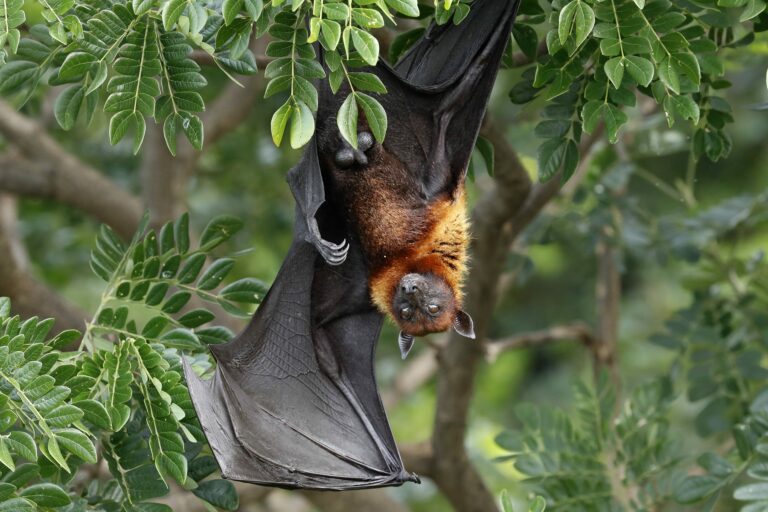- According to a study published in the journal Current Biology today, uncertainty about how many tiger subspecies there are in the world has frustrated efforts at conserving what’s left of the global tiger population.
- A research team led by Yue-Chen Liu of China’s Peking University analyzed the complete genomes of 32 tiger specimens, selected to be representative of all six potential subspecies, to confirm that tigers do indeed fall into six genetically distinct groups.
- The researchers also used their genome-wide survey to look for evidence that different groups of tigers have adapted to the distinct environments in their geographic regions through the process of natural selection. They say that their genomic research shows very little gene flow has occurred between tiger populations, but also that, despite the big cat’s low genetic diversity, each subspecies has a unique evolutionary history.
While there were perhaps as many as 1000,000 tigers in the world a century ago, scientists say that there are fewer than 4,000 today, occupying less than 10 percent of their historical range. The 13 tiger range countries responded to this precipitous decline in 2010 with an ambitious plan to double the global population of the endangered big cats by 2022, and Nepal in particular has seen success in reversing the tiger’s decline.
In order to save a species from extinction, however, it helps to understand that species as well as possible. Yet debates are ongoing in the scientific community over whether there are two subspecies of Panthera tigris, as some morphological and ecological analyses have suggested, or five or six subspecies, for which there is some molecular genetic evidence.
According to a study published in the journal Current Biology today, this uncertainty about such a fundamental characteristic of the species has frustrated efforts at conserving what’s left of the world’s tiger population. “The lack of consensus over the number of tiger subspecies has partially hindered the global effort to recover the species from the brink of extinction, as both captive breeding and landscape intervention of wild populations increasingly require an explicit delineation of the conservation management units,” the authors of the study, a research team led by Yue-Chen Liu of China’s Peking University, write.
Liu and team analyzed the complete genomes of 32 tiger specimens, selected to be representative of all potential subspecies, to confirm that tigers do indeed fall into six genetically distinct groups.
“This study is the first to reveal the tiger’s natural history from a whole-genomic perspective,” study co-author Shu-Jin Luo of Peking University said in a statement. “It provides robust, genome-wide evidence for the origin and evolution of this charismatic megafauna species.”
The six subspecies confirmed by the research are the Amur or Siberian tiger (Panthera tigris altaica) in far eastern Siberia and northeast China; the Bengal tiger (Panthera tigris tigris) in Bangladesh, Bhutan, India, and Nepal; the South China tiger (Panthera tigris amoyensis), believed to be extinct in the wild; the Sumatran tiger (Panthera tigris sumatrae), the last of the Indonesian island tiger populations, which is itself critically endangered; the Indochinese tiger (Panthera tigris corbetti), which occurs in Myanmar, Thailand, and Laos but has not been recorded in Vietnam in more than two decades; and the Malayan tiger (Panthera tigris jacksoni), which was only first recognized in 2004 and is critically endangered as well.

The research also confirmed that there were once three other tiger subspecies that have already gone extinct: the Javan tiger (Panthera tigris sondaica), the Bali tiger (Panthera tigris balica), and the Caspian Tiger (Panthera tigris virgata).
All six extant subspecies descended from a common ancestor as recently as 110,000 years ago, the researchers concluded. “Within mainland Asia, Bengal tigers formed the earliest divergence, whereas Amur tigers formed the latest,” they write in the study. “The Indochinese tiger is the sister taxa to the Malayan tiger, indicating a recent, albeit substantial, differentiation.”
The researchers used their genome-wide survey to look for evidence that different groups of tigers have adapted to the distinct environments in their geographic regions through the process of natural selection. They say that their genomic research shows very little gene flow has occurred between tiger populations, but also that, despite the big cat’s low genetic diversity, each subspecies has a unique evolutionary history.
“In the end, we were quite amazed that, by performing a stepwise genome-wide scan, seven regions including 14 genes stood out as the potential regions subject for selection,” Luo said.
Of course, some differences between tiger subspecies are obvious, based on their distinct physical features. Amur tigers, for instance, are large and have pale orange fur and brownish stripes, whereas Sumatran tigers are smaller and have darker fur with thick, black stripes. In fact, the strongest signal of natural selection the researchers found was in the Sumatran tiger and its ADH7 gene, which relates to body size. Liu and team theorize that the Sumatran tiger, which is distinct from all continental tiger subspecies, adapted its smaller size in order to reduce its energy demands and allow for survival on the Sunda Island’s smaller prey animals, like wild pigs and a small deer known as the muntjac.
These findings present strong genetic evidence for subspecies delineation in tigers, Luo said: “Tigers are not all alike. Tigers from Russia are evolutionarily distinct from those from India. Even tigers from Malaysia and Indonesia are different.”
The findings can also help inform tiger conservation management and planning, the authors write. “As with many endangered species, tigers have been classified into subspecies — natural geographically separate populations — for purposes of recognition and conservation. … Because many of the conservation policies and measurements regarding the tiger, including coordinated captive breeding programs and legislations in several tiger range countries, are based on ‘subspecies taxonomy,’ an appropriate description of subspecies is vitally important.”
The results of their genome-wide study “correspond precisely with the geographic subspecies” previously named, the researchers add. “Understanding the tiger’s natural history from a genomic perspective provides a data-driven foundation for subspecies recognition, conservation strategic planning, and management actions. Our general goals are to reverse the species’ decline by maximizing the efforts to preserve the genetic diversity, evolutionary uniqueness, and potential of the species Panthera tigris.”

CITATIONS
• Goodrich, J., Lynam, A., Miquelle, D., Wibisono, H., Kawanishi, K., Pattanavibool, A., Htun, S., Tempa, T., Karki, J., Jhala, Y. & Karanth, U. 2015. Panthera tigris. The IUCN Red List of Threatened Species 2015: e.T15955A50659951. doi:10.2305/IUCN.UK.2015-2.RLTS.T15955A50659951.en. Downloaded on 25 October 2018.
• Liu et al. (2018). Genome-Wide Evolutionary Analysis of Natural History and Adaptation in the World’s Tigers. Current Biology 28, 1–10. doi:10.1016/j.cub.2018.09.019














